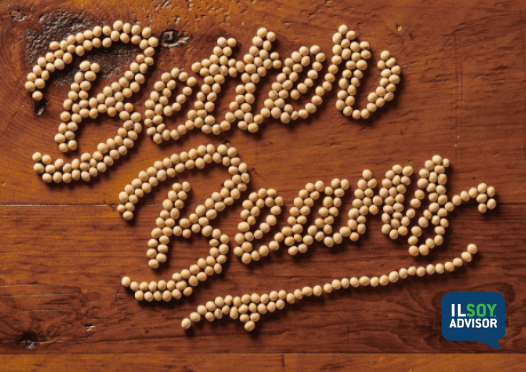ILSOYADVISOR POST
Agronomy: Field Days Preview: Planting Date and Maturity Group
Choosing the right soybean planting date, maturity groups and plant populations is like piecing together a puzzle. But with understanding and common sense it can be achieved, resulting in a higher yield and better profitability. The importance of light interception and building a plant “foundation” through early planting continue to pay dividends.
For years soybeans have been known as the crop we “plant after corn” or “plant when it’s warm enough to wear shorts”; however, in recent years we’ve seen a clear trend of higher soybean yields with earlier planting. In our studies in Central Illinois we’ve consistently observed maximum yields correlating to mid-to-late April through early May plantings, which correlates in our research to maximizing the number of growing days that soybeans can manage in our geography.
As recently as 2015, we even had a soybean planting date on April 1st provide us maximum yield potential with one maturity group. This information has pushed us to raise questions about planting date, soil conditions and temperatures around planting, and how we can make best management decisions for soybean planting. Conventional wisdom has always told us we need temperatures of 50°F in the first 24 hours to avoid seedling injury, but we have evaluated plantings from late March and early April that now contradict those previous assumptions.
In addition to planting date, we consistently receive questions about what maturity groups and plant populations should be paired up with various planting dates. Should we plant the same variety, maturity group and population on April 15th as we would on May 15th? In addition to planting date, we set out to answer through our research whether the puzzle of planting date, maturity group and plant population is static, or a dynamic system that needs adjusting as the planting season progresses.
To help address this question, for several years we’ve planted soybeans on 5 different planting dates, using a range of 4 maturity groups representing the common spread in Central Illinois (groups 2.9 – 4.1), and 3 target plant populations (128,000, 160,000 and 192,000 plants/a). From this research we’ve noted benefits to adjusting your maturity groups and plant populations, based on the calendar date those soybeans are planted. The trends show yield benefits to longer season beans planted early and at lower than expected final stands. As the growing season progresses into May, we see less benefit from long season beans, but also see higher populations providing more yield. As we continue to accumulate more data in 2016 from this large trial, we hope to continue putting the pieces of the puzzle together for Illinois soybean growers.
Come to the ILSoyAdvisor field days on August 3rd in Seymour as BASF agronomists AJ Woodyard and Jeremy Hogan review the importance of fine-tuning planting date with maturity selection and population. To register for an event, click here.




Comments
Add new comment